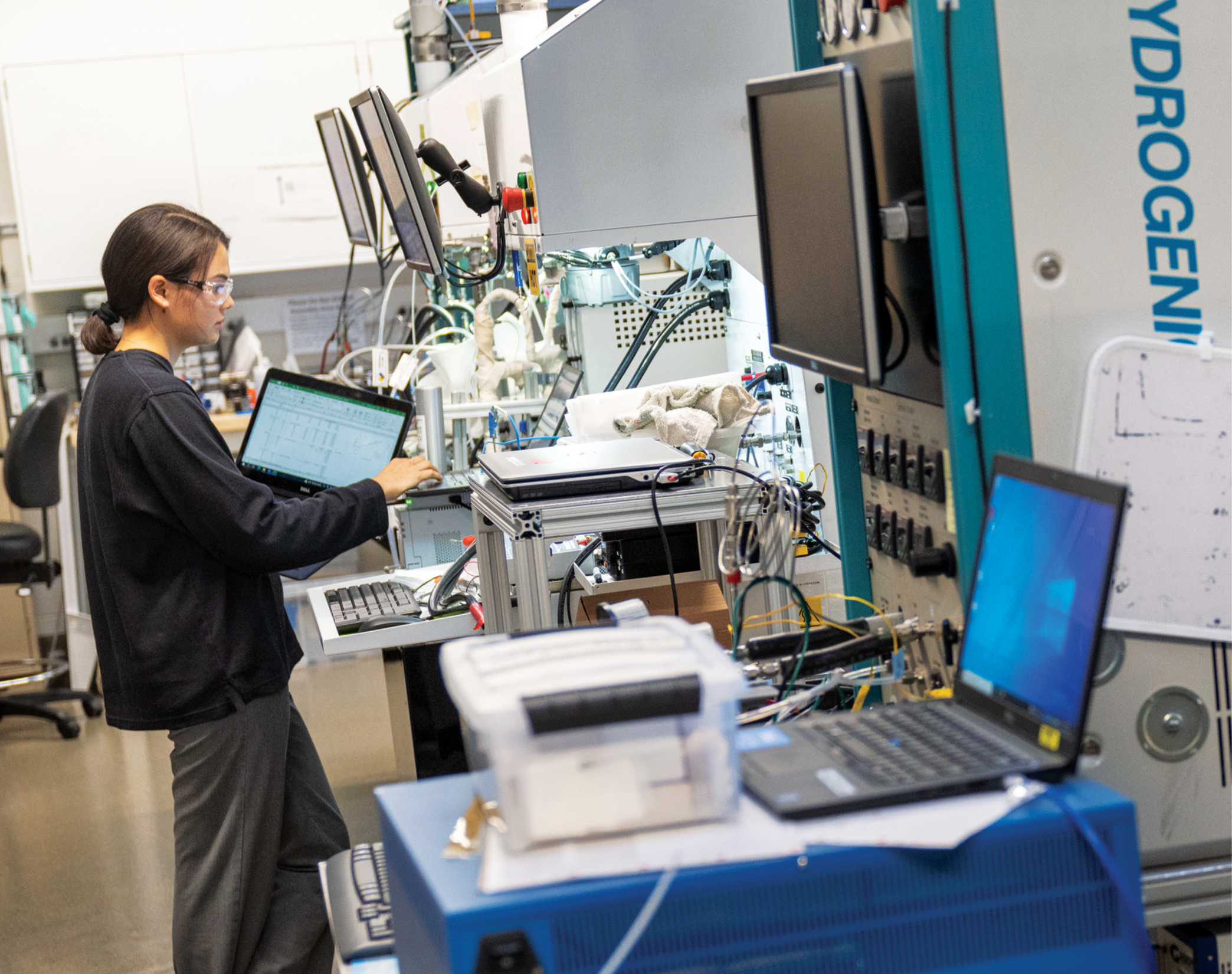From life-saving medical breakthroughs to everyday items we take for granted, Colorado innovation has been changing lives for the better for many decades. From preventing heart failure to treating Alzheimer’s, researchers in Colorado are hard at work improving human health and expanding lifespans.
This is all possible because Colorado has one of the highest per capita concentrations of federal science, research, and engineering facilities in the nation. Colorado has 33 federally funded science research labs. The largest is NREL — the National Renewable Energy Laboratory in Golden. NREL specializes in the research and development of renewable energy, energy efficiency and sustainable transportation.
Colorado is the No. 2 state for technology and science, per a 2020 ranking by the Milken Institute. Colorado recorded $1.75 billion in higher education research and development expenditures in 2021, up from $1.67 billion in 2020, according to the National Science Foundation. Some $563 million were spent in R&D at University of Colorado Anschutz Medical Campus, while $548 million were spent at University of Colorado in Boulder and $447 million were spent at Colorado State University in Fort Collins.
From the Teddy Bear to Nobel Prizes
Colorado has long been a state of creative thinking, research and invention. Did you know, for example, that the cheeseburger, Jolly Rancher and root beer float were all invented in Colorado? So were the wheel clamp, teddy bear and outdoor Christmas lights.
NREL alone is responsible for 850 patents. In fiscal year 2020, NREL set a new record for patent filing. The lab filed 188 patent applications in 2020, up from 124 patents filed in 2019.
University of Colorado attracted $1.46 billion in total sponsored research awards in fiscal year 2021-2022 to conduct research in a variety of critical sectors, including energy, bioscience, aerospace and healthcare. Research stemming from CU has launched 190 startups over the past quarter century. That track record places CU in the top 5 percentile nationally for university business startups and ranks CU No. 18 out of the 349 reporting institutions. CU is also responsible for five Nobel Laureates: Davide Wineland in physics in 2012; John Hall in physics in 2005; Eric Cornell and Carl Wieman in physics in 2001; and Thomas Cech in chemistry in 1989.
An offshoot of CU, the CU Anschutz Medical Campus is one of the most active research centers in the country. Every day, hundreds of scientists ply their trade at this institution, saving and improving lives by tackling the world’s biggest health problems. Many medical breakthroughs have occurred at CU Anschutz, including the first use of human cell cloning to study genetics and cancer; the development of the first vaccine for shingles; and the first liver transplant ever performed worldwide.
Researchers at CU Anschutz work alongside two top nationally ranked partner hospitals on campus as well as several specialty clinics and centers. Hundreds of millions of dollars in research grants flow into these institutions annually with the goal of converting new ideas from inception to practical value.
Saving Hearts & Slowing Alzheimer’s
Researchers at the University of Colorado School of Medicine recently discovered a mechanism for slowing the scarring of heart tissue, a process known as cardiac fibrosis. The landmark CU study, published on Dec. 8 in the American Heart Association’s Circulation Research journal, shows that the compound SW033291 slows fibrosis by inhibiting the action of an enzyme that degrades lipid signaling molecules that help prevent fibrosis.
CU Anschutz scientists also recently discovered a previously unknown stability in the central nervous system (CNS) that they predict could help treat certain brain disorders. Their study, published in the journal Neuron, showed how information is transmitted between neurons in the CNS. In diseases like Alzheimer’s, cognitive decline and memory loss are the result of a failure in synapses.
Because of discoveries like this, CU Anschutz has been named one of the top academic institutions in the world for innovation, according to Nature’s 2022 Innovation Index report. Nature ranks CU Anschutz in the top four universities globally for creating the strongest innovation links. The study tracks things like patent citations, academic collaborations and other key data. CU Anschutz had one of the highest scores in the world for patent influence, ranking No. 15 globally.
CU Anschutz has more than 60 centers, six health science schools, biomedical research facilities, two nationally ranked hospitals and other critical resources.

